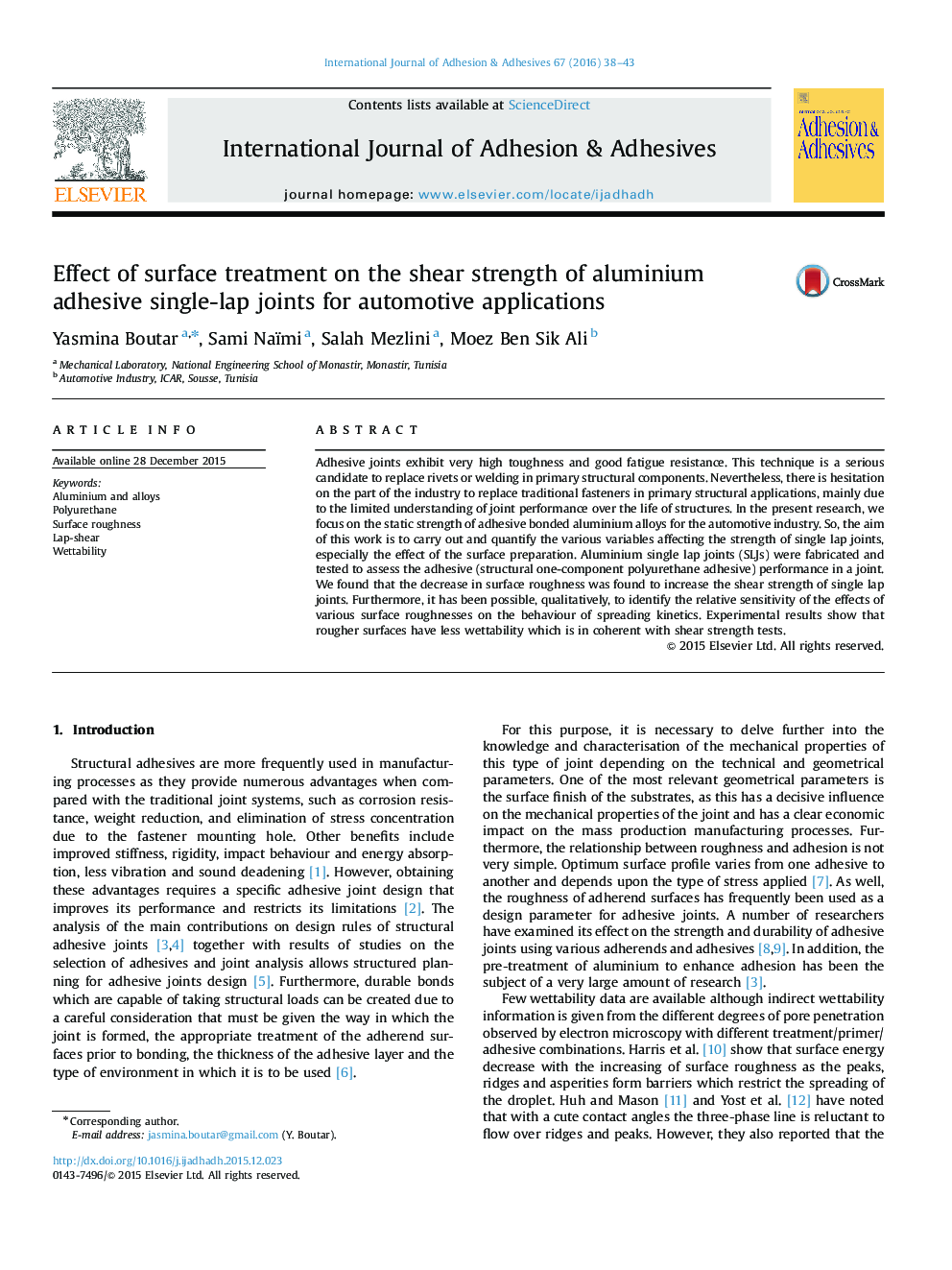| Article ID | Journal | Published Year | Pages | File Type |
|---|---|---|---|---|
| 776068 | International Journal of Adhesion and Adhesives | 2016 | 6 Pages |
Adhesive joints exhibit very high toughness and good fatigue resistance. This technique is a serious candidate to replace rivets or welding in primary structural components. Nevertheless, there is hesitation on the part of the industry to replace traditional fasteners in primary structural applications, mainly due to the limited understanding of joint performance over the life of structures. In the present research, we focus on the static strength of adhesive bonded aluminium alloys for the automotive industry. So, the aim of this work is to carry out and quantify the various variables affecting the strength of single lap joints, especially the effect of the surface preparation. Aluminium single lap joints (SLJs) were fabricated and tested to assess the adhesive (structural one-component polyurethane adhesive) performance in a joint. We found that the decrease in surface roughness was found to increase the shear strength of single lap joints. Furthermore, it has been possible, qualitatively, to identify the relative sensitivity of the effects of various surface roughnesses on the behaviour of spreading kinetics. Experimental results show that rougher surfaces have less wettability which is in coherent with shear strength tests.
